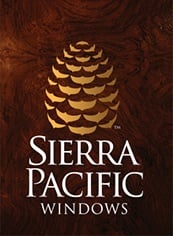What are they? We’d be happy to enlighten you!

Are you building a new home and thinking about exterior finishes that will last? Have you worked in a building for many years and seen the progression of its original, rich bronze cladding fade to more milk
 chocolate that doesn’t quite match anymore? Perhaps you had a shiny red car once that you fell out of love with when it lost its luster into a more faded, almost pink, version that you wish you knew was possible BEFORE you bought it. Inch, foot, mile, cup, teaspoon, liter, peck, bushel, and on and on... We have measurements for everything else it seems, so what about colors? Well, this is where Delta E comes in! Delta E is a form of measurement to give you an idea of just how much a color could change, or has changed, from the original.
chocolate that doesn’t quite match anymore? Perhaps you had a shiny red car once that you fell out of love with when it lost its luster into a more faded, almost pink, version that you wish you knew was possible BEFORE you bought it. Inch, foot, mile, cup, teaspoon, liter, peck, bushel, and on and on... We have measurements for everything else it seems, so what about colors? Well, this is where Delta E comes in! Delta E is a form of measurement to give you an idea of just how much a color could change, or has changed, from the original.
In the fenestration world of aluminum clad windows and doors, the best manufacturers use exterior finishes that have undergone a great deal of testing to gauge their durability and colorfastness over time. These tests allow a warranty to be given for their exterior finishes, that includes a Delta E number representing how much the color can - and is allowed to - change from its original, during the offered warranty period and be considered acceptable. The smaller the number, the less the human eye will perceive change; the larger the number, the more noticeable the change with the human eye. This is a very trimmed-down explanation that sounds simple. However, there’s actually a lot of science and math involved that determines this Delta E number and why it works.

- <= 1.0: Not perceptible by the human eye
- 1-2: Perceptible through close observation
- 2-10: Perceptible at a glance
- 11-49: Colors are more similar than the opposite
- 100: Colors are exactly the opposite
Now, let’s get more specific.
• dL* represents a lightness difference between the sample and standard colors.
• da* represents the difference in redness or greyness between the sample and standard colors.
• db* denotes blueness-yellowness differences between the sample and standard colors.
In the case of the levels mentioned above, the higher the value, the greater the difference in that dimension. Since Delta E revolves around three core elements, it’s easier to calculate than you would expect.
You only have to square the difference between each of the L, a, and b values; then add them together; then take the square root of the sum. The mathematical expression of the formula, however, is a bit more intimidating:
This formula provides significant insight into the difference seen between two colors.

Delta E is calculated using these photometers, which can translate a color into the three variables plotted along the three axes of this CIE L*a*b* standardized color space. Once you have two sets of these coordinates - for example from a sample before and after being exposed to accelerated UV - you can easily calculate the distance between them in the three-dimensional space. Specifically, it is this distance – or change - that we know as Delta E.
Why do we need something so technical just to determine how much something is going to or has changed?
Well, we don’t want that faded red sports car again, right? We are determining the perceived or ‘sensation’ of change. And this, of course, could be quite speculative without a common way to measure ALL of the different industries’ various materials, textures, glosses, surface finishes, etc.., because a person viewing the color, will not be able to give EXACT color details or be consistent. This is especially true when the physical limitations of human eyesight can’t reliably recognize changes of less than 3 Delta E. Therefore, the better color reading method is by instrumental reading - by way of the spectrophotometer (an instrument that measures the number of photons (the intensity of light) absorbed after it passes through a sample solution). And Delta E is more accurate than other non-uniform systems like RBG and CMYK. An RGB file consists in composite layers of Red, Green, and Blue, each being coded on 256 levels from 0 to 255. CMYK color stands for cyan, magenta, yellow and black (K for key) and is the color mode used by commercial printing equipment to create full-color graphics and images. When a manufacturer is building a product to their ideal standards, they want to know that calculated tests will provide consistent and reliable results every time. Consumers can have confidence that when manufacturers provide Delta E measurements for change of color with their warranties, they are being provided scientifically tested and dependable values over those that don’t.
Where does all of this fit in within the fenestration industry?
How does this information help you make a more informed decision on what is the best finish for your construction or renovation project? Exterior materials are exposed to a multitude of factors that can cause finishes to change. Through testing and measuring of these various exposed materials in accelerated conditions we can mathematically assign a Delta E value to it that will indicate the rate of color change it has been tested to and is allowed to have during the warranty period. In the case of choosing your new windows and doors, the material itself as well as the quality of finish will play a leading role in how high or low that Delta E number will be.
 When you’re investing in a quality building design, you want to feel confident that you are using the highest quality products in your design. You gain this confidence by knowing that those products have gone through meticulous testing, yielding consistent, reliable results. Where exterior finishes are concerned, when the product warranty states you have a 3, 5, 8, or other Delta E change during the warranted years’ lifespan, you will now understand what those values mean and will feel confident you’re investing wisely.
When you’re investing in a quality building design, you want to feel confident that you are using the highest quality products in your design. You gain this confidence by knowing that those products have gone through meticulous testing, yielding consistent, reliable results. Where exterior finishes are concerned, when the product warranty states you have a 3, 5, 8, or other Delta E change during the warranted years’ lifespan, you will now understand what those values mean and will feel confident you’re investing wisely.
The wisest choice of all is choosing windows and doors with superior Powder Coated Finishes! Powder Coated finishes are more durable, more scratch-resistant and have greater color retention than liquid finished exteriors. And what may be the absolute best advantage for using these superior Powder Coatings is that they are healthier for us all! Powder Coated finishes are created using non-toxic organic materials, over 95% reclaimable and recyclable, have virtually no Volatile Organic Compounds (VOCs), use less energy, do not emit hazardous waste during the manufacturing process, contribute toward LEED credits, and are even recognized by the EPA! AND for all of these reasons and more is why Sierra Pacific Windows chooses to continue our responsible manufacturing practices by Powder Coating all of our exterior aluminum clad products!
Want more technical talk to convince you that Powder Coatings are the best performing finishes for high-performance windows and doors? Check-in with one of our Architectural Consultants to find out how and why powder coatings are superior to liquid finishes and better for the environment!

So now you know before you buy! I hope this article helps take the guesswork out of choosing the best finish and material options for controlling fading of windows and doors. Powder coated extruded aluminum clad products are proven superior by rigorous testing both in labs and in the field to be a harder, more durable, and most importantly, more fade resistant. Backed by an industry leading finish warranty, choosing the best material and finish for your new window and door package has never been easier!
Want to know even more? Contact your Architectural Consultant today here – we love to help!
Photo credits: Photo 4 Skylab Architecture & Stephan A. Miller



